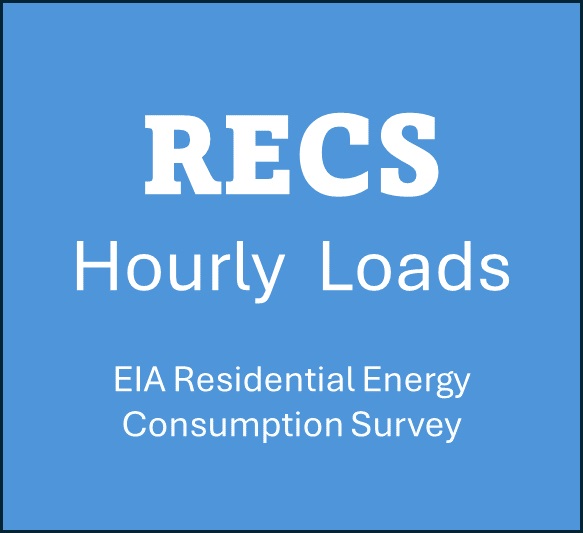| MAISY RECS Hourly Loads & Emissions Databases |
MAISY RECS Adds Hourly Loads and Emissions Data to Each of the 18,000+ US Households in the RECS Survey

The Department of Energy’s Energy Information Administration (EIA) Residential Energy Consumption Databases (RECS, final release, June 2023) provide 2020 individual customer household, structure, appliance, and annual energy use survey data for more than 18,400 individual residential households. Unlike previous versions, the current survey provides state-level identification for each household, extending analysis applications to individual states. These data extensions provide a more robust national and state data sets of residential energy use data to support utility, state, manufacturers, and other energy-related organization analysis and planning that rely on hourly load profiles. MAISY RECS extensions add the following data items to each of the 18,400+ individual RECS household records:
Each MAISY RECS Residential Hourly Load Database includes 94 of the original RECS variables, 5 new emissions variables, and 8760 new hourly loads for either (1) whole buildings or (2) whole building plus 7 end use categories (space heat, AC, water heating, refrigerator/freezers, appliances (clothes dryer + oven+ dishwasher + clothes washer + microwave), lighting-TV, and other end uses. These new databases improve basic RECS user experience by selecting 94 of the most relevant items from among the 778 data items in the database and by transforming coding numbers into meaningful responses, e.g. fuel type =5 is presented as elec (electricity) in the spreadsheet. ( sample database records) MAISY RECS databases include RECS respondent ID so users can integrate any other data item in the original RECS into the MAISY RECS databases. MAISY RECS Applications Notes and PapersApply Extended RECS Hourly Loads Databases to Develop Excel Agent-Based Energy and Hourly Load Forecasting ModelsState-Level Whole Building Hourly Load Variations and Drilling Down to Household End-Use Detail More information on MAISY RECS Hourly Load Databases
|
Related MAISY Topics |